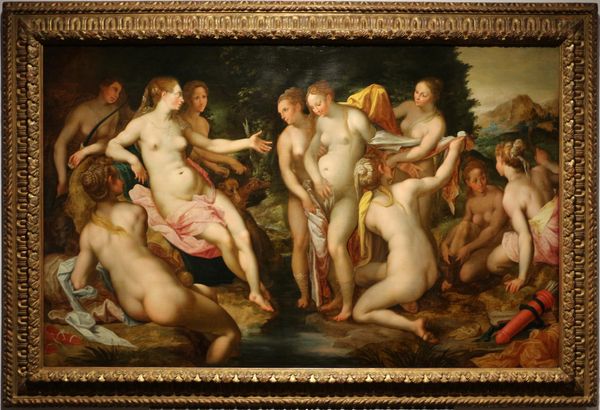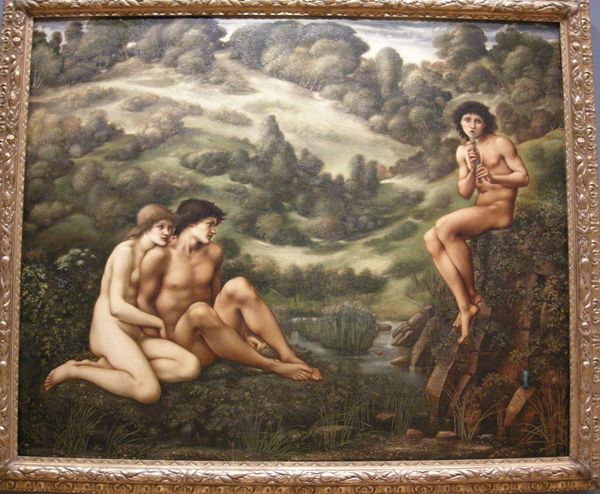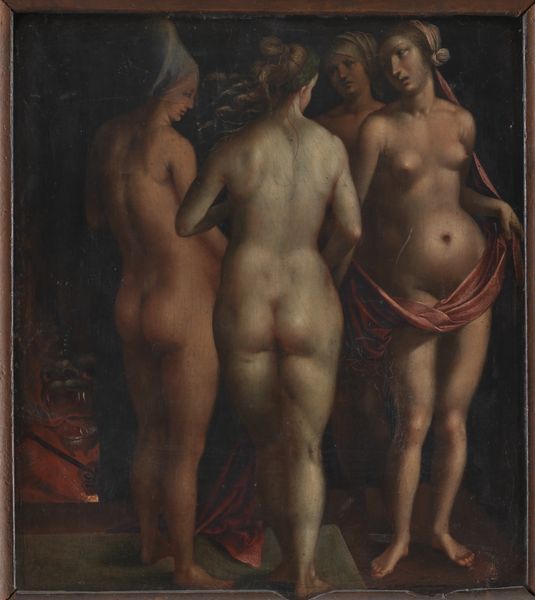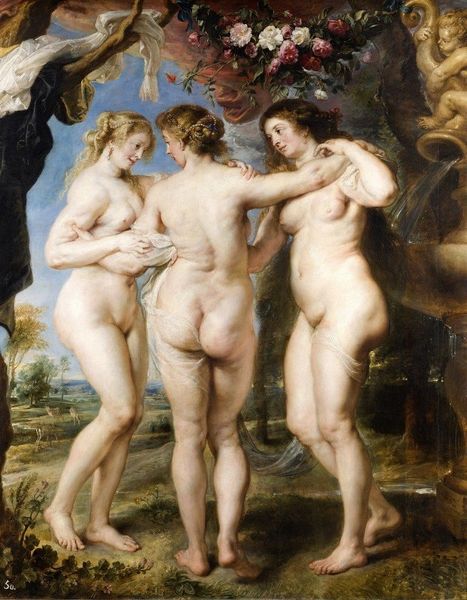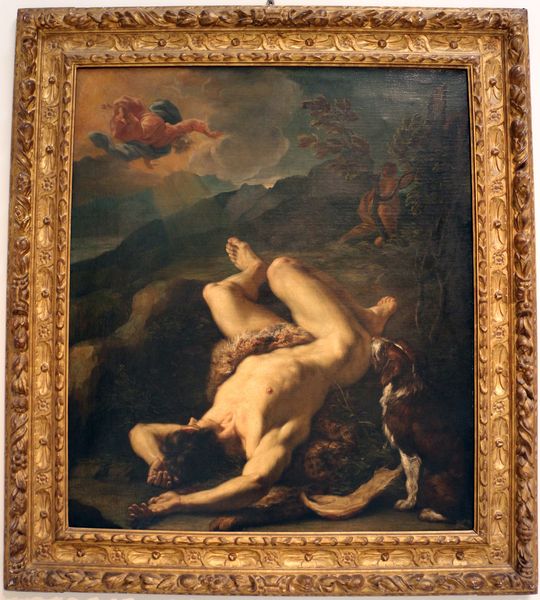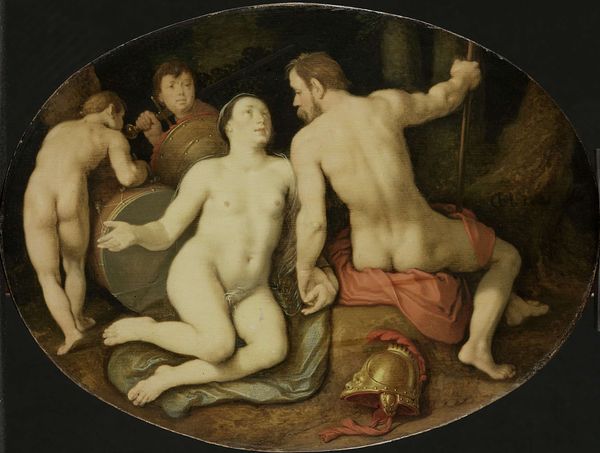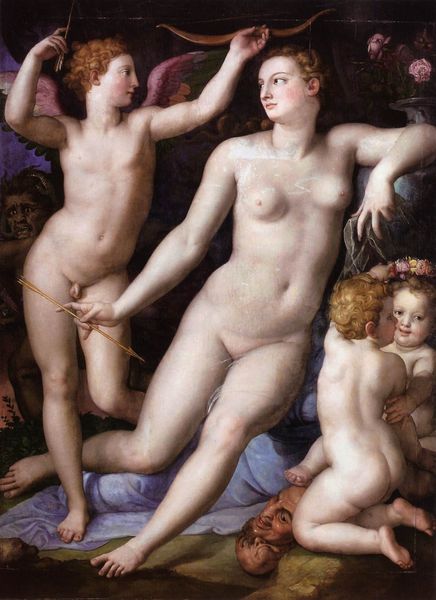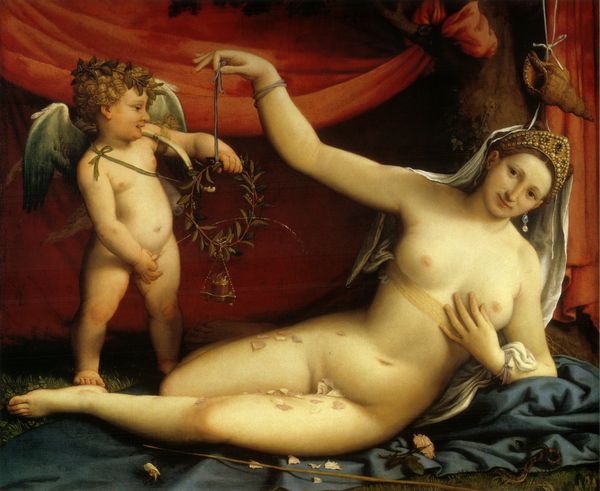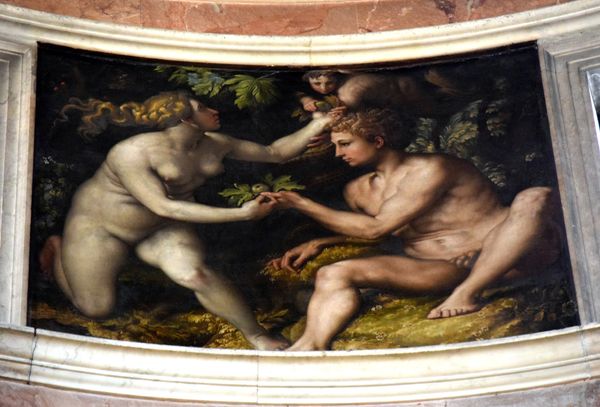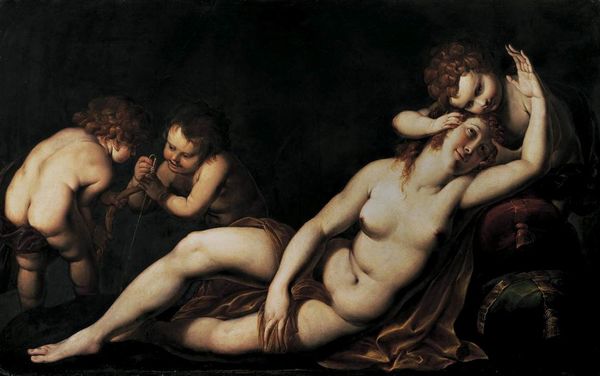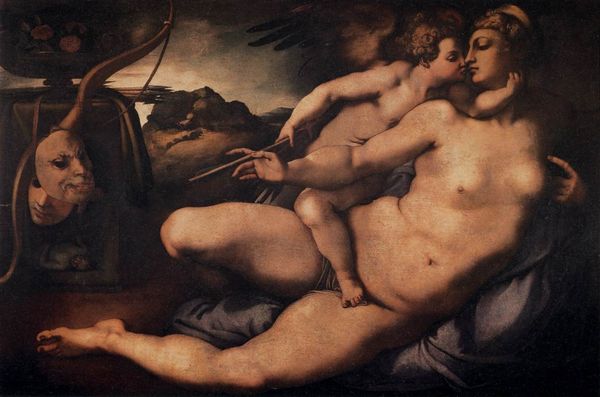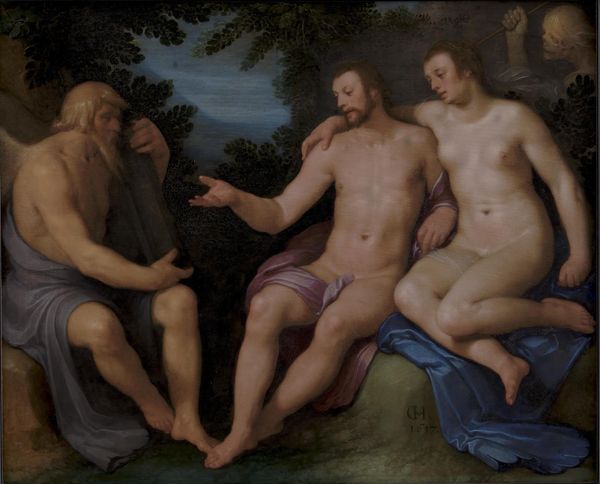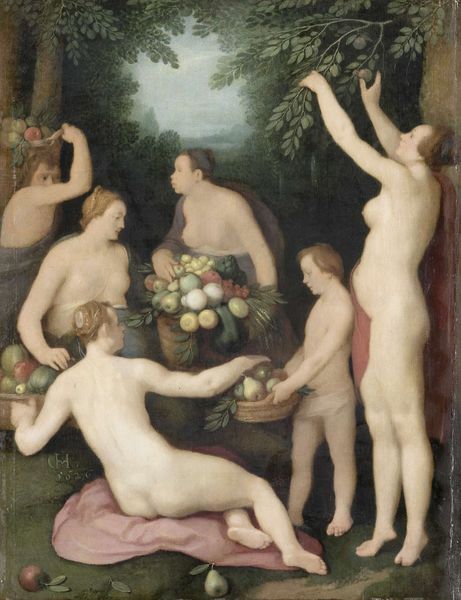
painting, oil-paint
#
allegory
#
painting
#
oil-paint
#
classical-realism
#
oil painting
#
group-portraits
#
mythology
#
nude
Copyright: Public domain
Palma il Giovane likely painted this oil on canvas work, The Three Graces, in Venice, Italy sometime between 1560 and 1628. The Three Graces of Greek mythology -- Aglaea, Euphrosyne, and Thalia -- were said to represent beauty, charm, and joy. During the Renaissance, paintings of nude women were often seen as allegories, or symbolic representations of abstract ideas. Here, the figures’ voluptuous bodies, pale skin, and idealized poses reflect a cultural ideal of feminine beauty. But these features also raise interesting questions about how women were viewed in Venetian society. Were women seen as the embodiment of virtue, as the painting suggests? Or were they seen as objects of male desire? As art historians, we can begin to answer these questions by examining various primary sources, such as letters, diaries, and legal documents. We may gain insight into the social conditions that shaped the production and reception of art in Renaissance Venice. And it is by considering these factors that we can arrive at a more complete understanding of art's meaning and purpose.
Comments
No comments
Be the first to comment and join the conversation on the ultimate creative platform.
